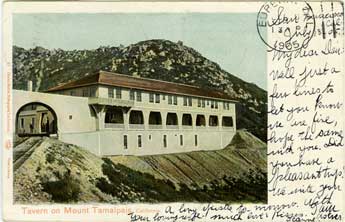Undivided Back Postcards
1901–1907
Congress passed another law taking effect in December 1901. Instead of requiring the appearance of huge text reading “Private Mailing Card” on the back of every postal card, the words “Post Card” would suffice. A size limit from the 1898 act was removed, allowing cards to enlarge to the familiar 5-1/2 by 3-1/2 inch size.


The law also called for no written messages on the backs of postcards, only mailing addresses. It’s difficult to believe that picture postcards originally weren’t intended for greetings or personal notes of any kind. Some authors would squeeze tiny text onto the front of a card. Since the face of a postcard might be taken up entirely by a picture, this made including a message difficult. In response, some publishers left space on the front side of a postcard, such as a wide margin along one edge, or a vignette, intended to accommodate a short handwritten note. These years saw a great surge in the popularity of sending and collecting postcards.
During this era, the number of cards printed doubled nearly every six months to satisfy the public’s postcard addiction. European postcard publishers established offices in the US, importing millions of high-quality cards, and by 1907 accounted for over 75% of all postcards sold in the United States. So fervent was postcard use during the undivided and divided back eras that the US Post Office’s official tally for postcards mailed in the fiscal year ending June 1908 was nearly 680 million when the nation’s population was close to 90 million.
